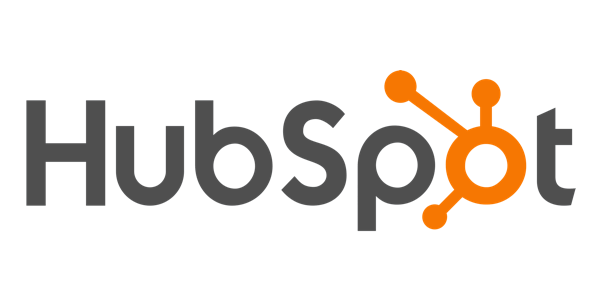If you are using HubSpot to manage your inbound marketing, content creation is probably a high priority for you.
Right out of the box, HubSpot provides a lot of great features for content marketing. In fact, HubSpot recently launched its Content Strategy Tool, which offers a great way to organize content ideas and optimize your content for SEO.
However, there are a number of third-party integrations that can help take your content marketing to the next level. These seven integrations allow you to analyze content analytics, create content and streamline publishing.
Beacon
When it comes to capturing leads, premium content should be a huge part of your content marketing strategy. Most businesses know they need eBooks and other lead magnets, but the process and cost of creating them can be a barrier.
Beacon allows you to recycle your existing content to easily create eBooks and premium content. The solution can automatically convert your HubSpot blog posts into eBooks and pillar content, with pre-built templates and design elements, which you can then post as a PDF or web book. The benefit of the webbook version is automatic mobile optimization and the ability to collect analytics on your lead’s reading habits.
SnapApp
Another tool for boosting your existing content is SnapApp. This solution makes it easy to build interactive assessments, infographics, calculators, videos, content, polls, and more. Providing ways for your visitors to interact other than the usual web form can be a great way to increase your lead generation.
SnapApp’s HubSpot integration passes leads directly to your HubSpot CRM and allows you to collect insights on lead activity in these interactive content types.
Databox
While HubSpot’s analytics and reporting have come a long way in the past few years, they still don’t give you a complete view of everything you need to make content decisions. Especially when you are combining insights from tools like HubSpot, SEMrush, and social media, having a tool to connect all your data sources makes a big difference.
Our favorite is Databox, which aggregates data from all your various sources, presents it in highly customizable dashboards, and allows you to set goals and monitor progress. According to Content Marketing Institute, analytics tools are the number one tool used to manage content marketing efforts (used by 87% of marketers). As your most important tool for informing content strategy and making improvements, having a way to organize all that data is a must.
Uberflip
High-quality content isn’t enough if you aren’t able to create an engaging, personalized experience for your website visitors. Content personalization should be built into your content strategy from the beginning and should be powered by AI technology.
While HubSpot does offer some tools for optimizing user experiences, Uberflip goes to the next level by creating content hubs that allow you to design account-based marketing experiences, provide AI-powered content recommendations and provide additional content through the sales cycle.
Atomic Reach
Most of the content analytics you use help identify your most popular topics and optimize conversions. Atomic Reach takes it a step further by diving deep into your content for true content optimization and scoring.
Their platform provides a content score to improve the tone, quality, and readability of your content, analyzes each piece to determine what elements are causing the most conversions, and provides specific wording suggestions to improve context and engagement. The HubSpot integration provides these insights while publishing content in HubSpot.
SEMrush
As of May 30, HubSpot is getting rid of its keywords tool. This is part of their new approach to content and the launch of the HubSpot Content Strategy Tool. While their new topic cluster strategy is definitely something marketers should pay attention to, does that mean you should completely disregard SEO and keyword research?
If the answer is no, SEMrush is a great replacement for HubSpot’s keyword tool (that, honestly, has always been a better keyword tool). Their HubSpot integration allows you to transfer all your HubSpot keywords into SEMrush, where you can then easily tag, filter, and create reports around them. While keyword tracking is important, their most powerful feature is their keyword suggestion tool. This can help you come up with useful content ideas, provide prompts to your freelance writers and even fill out your HubSpot topic clusters.
nDash
No list of creating and optimizing content would be complete without a source for high-quality content. As an open content creation platform, nDash provides access to over 5,000 freelance writers with complete transparency into writer experience, rates, and past work. The real value is the ability for writers to pitch you content ideas directly so you can easily evaluate writers and fill your content calendar.
The recent HubSpot integration allows you to push and synchronize content created in the nDash platform directly to HubSpot as a blog draft to create a more seamless publishing experience. This integration follows a recent upgrade that allows writers and brands to edit written content inside the nDash platform rather than going back and forth through Word or Google Docs.
BONUS for HubSpot Agencies: Apps for Agency Services
For agencies looking to boost the effectiveness of the content they provide clients or offer new services that complement their inbound strategy, HubSpot provides some guidance. Their Agency Service Primers are HubSpot software integrations tailored to agencies. The directory includes Beacon and Databox, which we already mentioned, as well as a number of other HubSpot Certified Connect Partners.
HubSpot is a phenomenal tool for inbound and content marketing, but it can’t do everything. These additions can help improve how you create content and boost its success.
What other HubSpot integrations do you use? Let us know in the comments!
 Editor’s Note: This post was written by Tim Ludy, one of the top marketing/tech writers in the nDash community. To learn more about Tim — and to have him write for your company — be sure to create a free account on nDash.
Editor’s Note: This post was written by Tim Ludy, one of the top marketing/tech writers in the nDash community. To learn more about Tim — and to have him write for your company — be sure to create a free account on nDash.
